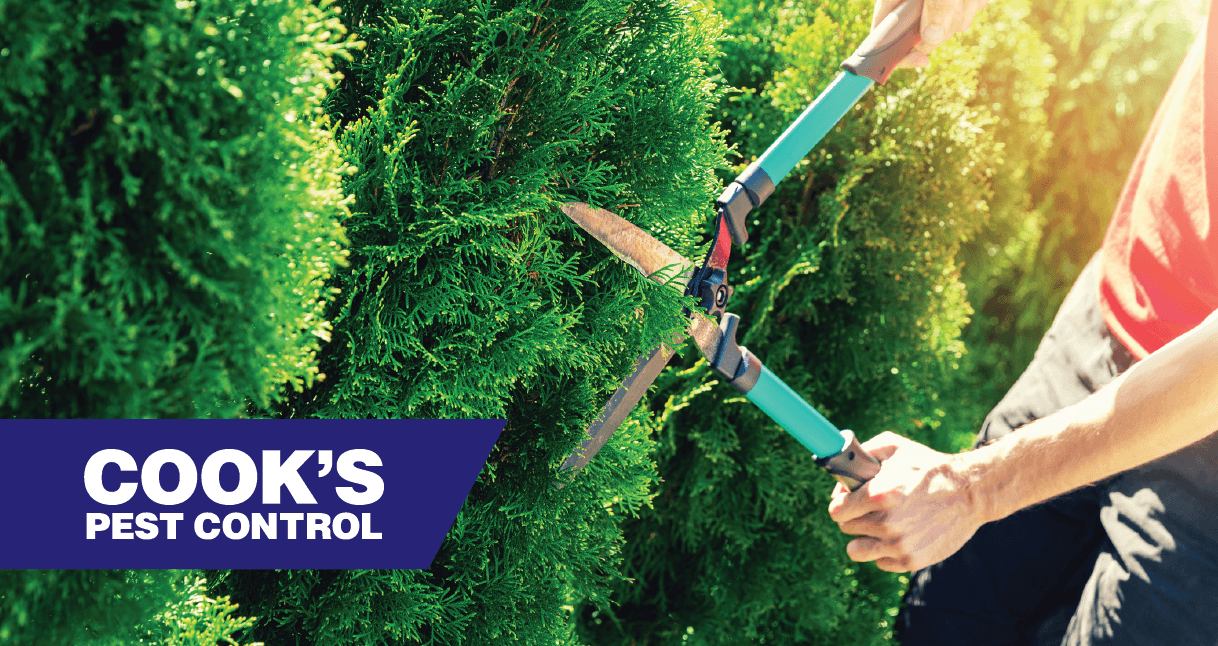Pest Proofing the Home

Most pests come from the outside, so wouldn’t it make sense to keep them out before they become an indoor problem?
Here are some ways you can keep pests out and make your home less desirable to them.
Door sweeps are simple and effective devices that are often overlooked and neglected. Chipped, broken, damaged, or nonexistent door sweeps leave openings that are big enough for pests to crawl or fly through. At night, the interior light of your home leaks out through these openings and attracts insects. Weatherstripping is also important for the same reason, so be sure to check for a tight seal around your doorways. It will also save you money on heating and cooling.
Many insects are attracted to lights because they use light to navigate. Day-flying insects steer by the sun, while night-flying insects use the moon. With all the competing light sources in the environment, insects can’t tell porchlight from moonlight. White incandescent, white fluorescent, and mercury vapor bulbs are all very attractive to insects. Switch to yellow, orange, or red incandescent or sodium vapor bulbs. Dimmer bulbs are also less attractive than brighter bulbs. Replacing outdoor lights with less attractive lights can greatly reduce the number of insects (and spiders that feed on these insects) near your home. Alternatively, turning off porch lights is also effective in keeping the light-loving bugs away. All windows should have coverings, such as blinds and curtains, to prevent inside light from being seen outside. The more light shining out of and around your house, the more bugs you’ll have been drawn in, which increases the chances of them finding their way inside through a gap or coming in when the door opens.
Windows, like doors, need to shut tightly. If you enjoy a good breeze, make sure your windows are equipped with screens. The screens should be intact and without holes and tears. The screen should fit securely in the window without gaps at the edges. If spiders are spinning webs and setting up shop between the screen and your window, chances are there’s a hole big enough for bugs to get through.
This may seem like obvious advice but refrain from propping your doors open. Doors need to remain shut when not actively in use. Propping the door open while grilling outside may seem like a good idea when your hands are full, but you’ll soon regret it when you find out how many house flies have gotten inside while seeking out your grilled delights. When your door is open at night, you’ll get all manner of night-flying insects invading your home and buzzing around the bright screen of your television or computer monitor.
Any time a pipe or cable enters your house, there’s a potential for a gap. Gaps around plumbing pipes are great places for mice, rats, and cockroaches to get inside. Seal up any gaps with caulk, cement patch, or aerosol foam. Just keep in mind that rodents can chew through most patches. Pack the gaps with copper mesh (steel mesh works but is prone to rust) to deter rodents, then patch with your product of choice.
Dryer vents should close tightly or be screened to prevent critters from coming through. This applies to all ducts or vents that open to the outside. Check your gable vent. This is a great entry location for ladybugs, paper wasps, and other overwintering insects looking for a warm place to stay. Crawlspace vents should also be screened to prevent wildlife from loafing around under your house. Opossums, for example, can support massive flea populations that may get into your home from the crawlspace. Crawlspaces should also have a door that shuts properly. A piece of plywood being held up by a concrete block does not constitute as a door.
Keep trees and shrubs trimmed and away from the house. Vegetation touching the house acts as a highway for insects such as ants. By using plants to reach the house, bugs can bypass any perimeter treatments around the foundation of the house that would have normally kept them under control.
Firewood piles are cozy places for carpenter ants, black widows, cockroaches, and many other pests. Keep firewood piles in a sunny location and elevated off the ground to allow airflow which will prevent moisture buildup. Do not let your firewood pile touch the house. Instead, leave a foot or two of space between the pile and your siding. If possible, firewood should be stored away from the house. The closer the pile is to your house, the closer any firewood pests are to your door and home.
Remove old tree stumps and dead trees, as these can harbor termites and carpenter ants. Leaf piles, yard debris, and trash provide safe havens for cockroaches, ground beetles, earwigs, and more, so keep your yard clear and debris-free.
Many of the home-invading bugs require high levels of moisture, which they often find in mulch. Ants, millipedes, centipedes, pillbugs, earwigs, ground beetles, and termites are just some of the critters that appreciate your overwatered mulch beds. Try not to water as much. Although perhaps an extreme solution, replacing mulch with gravel will discourage many insects from living and nesting near your home.
There are plenty of ways to pest-proof your home, and these are just a few ways you can stop a pest invasion. Focus on a few key areas first, then consider other repairs when you are able. During this time of year, your focus may be on excluding mice and rats. Before it warms up, you can change your focus to repairs which will keep out insects and spiders.
